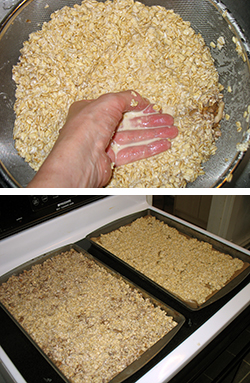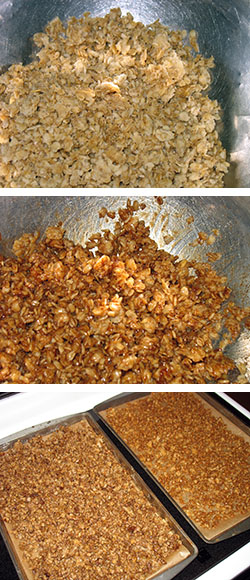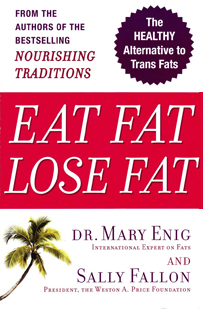Several months ago, when I wrote about my experience of gaining weight while drinking milk, and losing weight while eschewing milk, I promised I’d blog about how to keep your bones strong without the dairy products.
This is that post. 😀
Conventional wisdom – and lots of advertising – tells us that milk is the foundation of healthy bones. But like so many other bits of conventional advice about nutrition, it turns out to be wrong.
Here’s why.
1 • Calcium alone cannot give you strong bones.
Sure, calcium is an important building block for strong bones. You do need it. But you also need all the other building blocks: vitamin C, vitamin D, vitamin K, phosphorus, magnesium, and trace amounts of chromium, silica, zinc, manganese, copper, boron, and potassium.
Taking a calcium pill – or drinking extra milk – won’t ensure that you’re getting all the substances that go into strong bones. It might even harm you, since too much calcium can lead to impaired kidney function, kidney stones, high blood pressure, and possibly even an increased risk of heart attack.
Additionally, if you ingest too much calcium, then your body must adjust its stores of other vitamins and minerals in order to process the excess calcium.
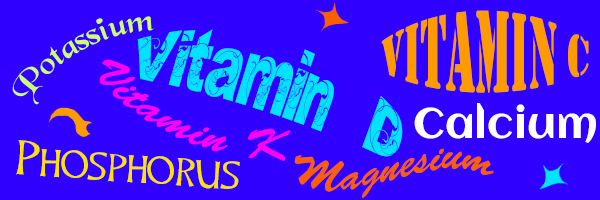
2 • Calcium intake is irrelevant, IF your body is not absorbing it and building with it.
People living in the United States ingest far more calcium than those living elsewhere, and yet US residents also suffer more osteoporosis.
What gives?
In addition to having all the building blocks on hand, the environment must also be right for actual building to occur.
Imagine trying to build a house in the midst of a snow storm. You might have all the materials on hand – bricks, mortar, wood framing, nails, etc. – but I doubt you’d get much building done.
Your hormones and your inflammatory status play large roles in determining whether conditions in your body favor the building of strong bones. Or not. High blood sugar and chronic inflammation both speed up the breakdown of bone and slow down the creation of new bone cells.
The foods you eat also influence the building conditions in your body.
Grains possess a lot of phytates (to protect the seed), and legumes possess both phytates and oxalates. Phytates and oxalates chemically bind to the calcium present, both in the grains and legumes themselves, and in other foods present in the digestive tract, carrying the calcium out of the body entirely.
Soaking and sprouting grains and legumes helps to reduce the volume of phytates, but cannot reduce it sufficiently to where its presence ceases to leech calcium (and other minerals) from your body. Additionally, from my previous post on insulin, we know that grains yield high blood sugar for a significant interval after you eat them.
If you don’t eat enough protein, you’ll get the same accelerated bone loss that high blood sugar and inflammation produce.
And if you don’t eat enough healthy fats, you won’t be able to assimilate vitamins D and K, because they are both fat soluble.
Bottom line: in addition to having all the building blocks on hand, conditions within your body must also favor the building and maintenance of strong bones.
3 • There are better sources of calcium than milk.
I remember seeing lists of calcium rich foods several years ago and being skeptical that anything could be better than milk. I was a big milk proponent. Sure, 8 ounces of kale might have 180 milligrams of calcium, but 8 ounces of milk has 300. And I can easily drink 3 glasses of milk every day, but I sure won’t be eating 3 cups of kale every day!
Ah, but!
The key is not how much calcium is present. The key is how much your body assimilates. The reason our RDA for calcium is so inflated is that most of the calcium from milk and pills goes right through. But the calcium from vegetables like kale and mustard greens and others gets absorbed and used. It is more bioavailable.
I went looking for some of the recent studies on calcium from plants versus calcium from milk and landed on the Harvard School of Public Health site with an interesting paragraph that I will quote below, since it occurs in the middle of a hugely long web page.
In particular, these studies suggest that high calcium intake doesn’t actually appear to lower a person’s risk for osteoporosis. For example, in the large Harvard studies of male health professionals and female nurses, individuals who drank one glass of milk (or less) per week were at no greater risk of breaking a hip or forearm than were those who drank two or more glasses per week. When researchers combined the data from the Harvard studies with other large prospective studies, they still found no association between calcium intake and fracture risk. Also, the combined results of randomized trials that compared calcium supplements with a placebo showed that calcium supplements did not protect against fractures of the hip or other bones. Moreover, there was some suggestion that calcium supplements taken without vitamin D might even increase the risk of hip fractures. A 2014 study also showed that higher milk consumption during teenage years was not associated with a lower risk of hip fracture in older adults.
So…if slugging down gallons of milk or dozens of calcium pills is not the answer – and it isn’t – how do we build and maintain strong bones?
I want action points! 😉
First of all, don’t look to bone density drugs such as Fosamax® and Boniva®. These deposit long-lasting compounds (alendronate and ibandronic acid, respectively) within the bone matrix, which give the illusion of greater bone density. But they do not form the normal matrix that actually makes bone strong. In fact, taking biophosphonates leads to bones that are more brittle and more likely to fracture! Talk about irony!
Okay, what does work?
1 • Avoid the foods that result in chronic inflammation, elevated blood sugar, and that remove nutrients from your body.
Highly processed foods and sugar-laden foods are especially bad. Grains and legumes become more and more problematic as we get older.
I hate to start with a “don’t,” but it’s a pretty important don’t. If your bones are currently strong, if your weight is normal, and your health is good, then you might be able to get away with skipping this #1 and leaning hard on #2, #3, and #4.
But I’ve got osteoporosis, I’m still carrying some extra pounds (even after the 23+ that I’ve lost), and I don’t have quite as much pep in my stride as I want. Action point #1 is critically important for me!
2 • Eat meat, seafood, and eggs, cooked with clarified butter, coconut oil, lard, or tallow to get adequate protein and adequate fats.
These are nutrient-dense foods containing many vitamins and minerals, in addition to the protein and fat. They help keep your blood sugar levels within the optimum range. They do not promote inflammation.
3 • Eat kale, mustard greens, turnip greens, collard greens, broccoli rabe, cooked spinach (many of the nutrients are not bioavailable in raw spinach), sea vegetables, bone broth, sardines, anchovies, shrimp, oysters, and canned salmon.
More nutrient dense foods that are high in calcium and the other building blocks for strong bones. You’ll get what you need without having to worry about balancing calcium with magnesium and potassium and all the others, the way you would if you were trying to get it right using pills. Plus the phytonutrients that may be a part of why calcium in plants is more bioavailable than from other sources are present.
4 • Lift weights.
Or do heavy yard work regularly. Or do yoga poses, many of which build strength as much as they increase flexibility. Engage in physical activity that is weight-bearing.
The compression of working against gravity stresses our bones in a healthy way, triggering them to build more of the structural matrix that can support the load.
I’m a swimmer, which is not weight-bearing. It has all kinds of other benefits, but strengthening my bones is not one of them, alas. So I lift weights in additional to swimming.
And there you have it.
Eat meat, seafood, and eggs.
Eat green, leafy vegetables.
Do weight-bearing physical activity.
And avoid foods that produce high blood sugar and inflammation.
I’ve been trying a lot of new-to-me recipes over the last few months, and I plan on sharing them with you as I continue to blog. I’ve also got a few more health hacks to write about. Stay tuned! 😀
For more about health and nutrition, see:
Test first, then conclude!
Let’s Talk Insulin
Milk Is Highly Insulinogenic
Thinner and Healthier
Butter and Cream and Coconut, Oh My!
Why Seed Oils Are Dangerous

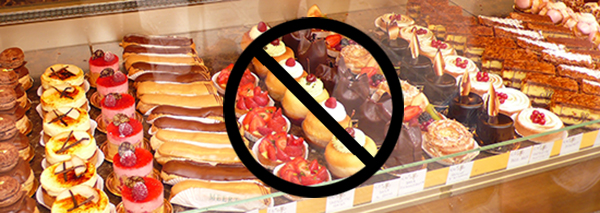
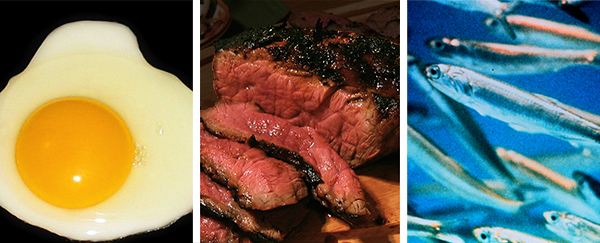
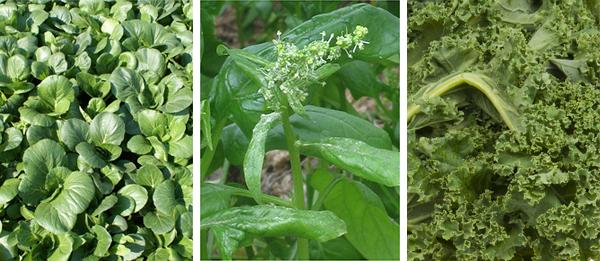
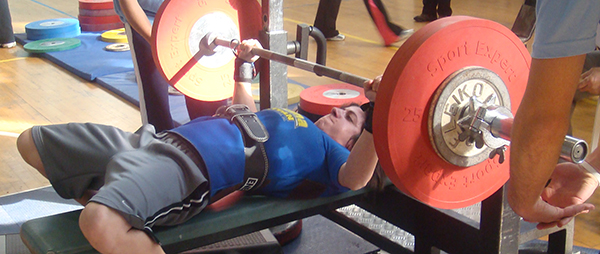

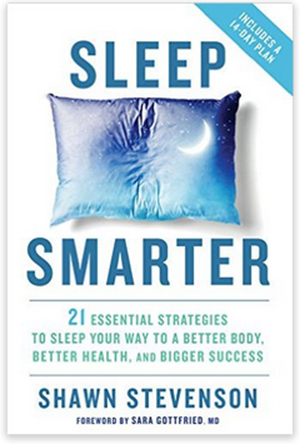

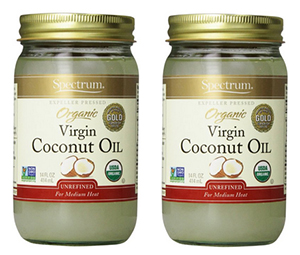
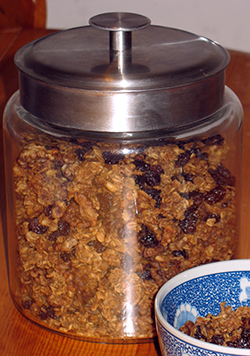

 Oatmeal
Oatmeal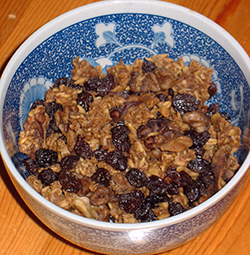 Granola
Granola 